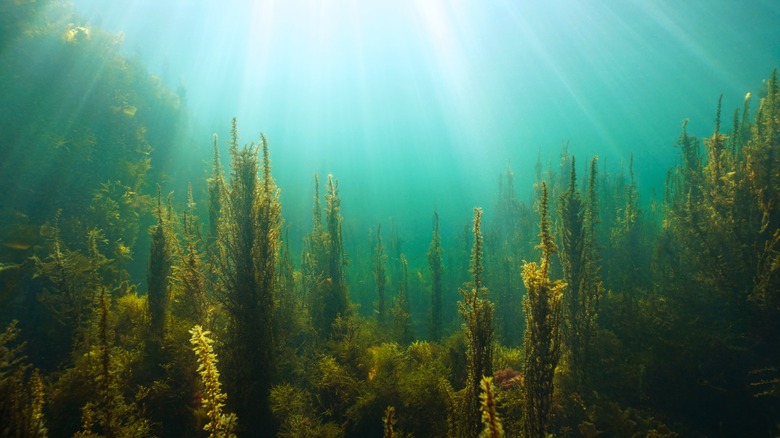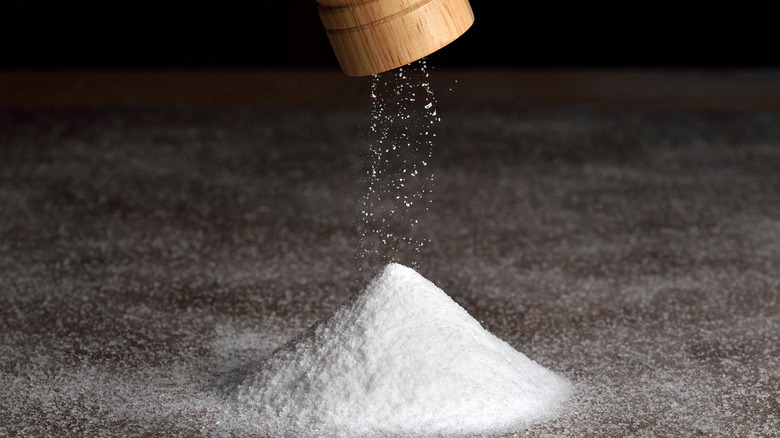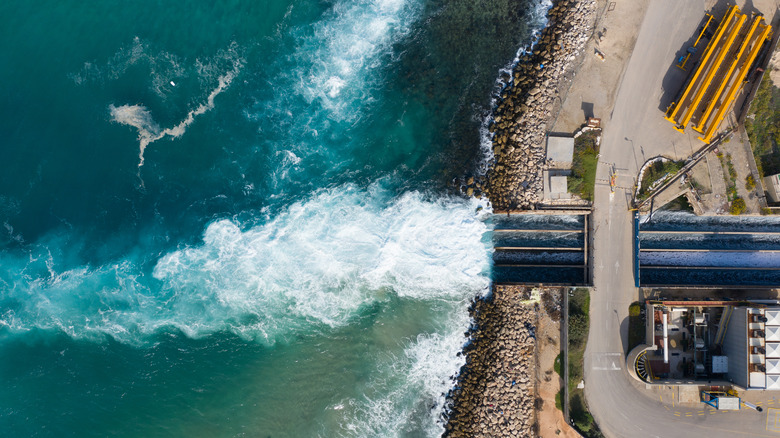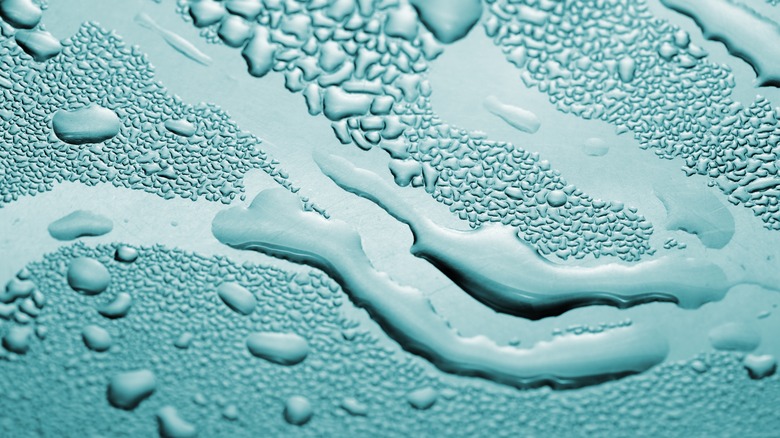What Happens To Desalinated Salt?
You've probably heard the saying, "Water, water everywhere, nor any drop to drink." The phrase, coined by poet Samuel Taylor Coleridge in his epic poem "The Rime of the Ancient Mariner" (posted at The Poetry Foundation) about two centuries ago, points to an issue that we're still dealing with today: a lack of access to fresh water.
Sure, the Earth's surface is covered in blue oceans. But all of that is too salty for anyone to drink, and sources of fresh water are much smaller (via U.S. Geological Survey). So how do we keep up with the growing population's need for clean, drinkable water? For some areas, the answer is an industrial process called desalination, through which salt is removed from seawater to create clean, fresh water.
That water's pumped to the general population to use for drinking, cooking, bathing, and pretty much anything else. But what about the salt that was left behind? Where does it go, and what use does it have?
It's not your standard table salt
When desalination is done, there are two things left behind. One is the water, and the other is something called brine. Brine isn't just salt like you'd find in the grocery store, though. According to Scientific American, desalination is often a chemical process that creates byproducts. Those byproducts mix with the salt, Scientific American reports, and the end product is something that can be toxic or harmful.
How much brine you get out of the desalination process depends on what kind of process you're using. But the end result is almost always going to be more brine than water, according to Scientific American. Even through the most efficient processes, desalination ends up separating saltwater into about 42% water and 58% brine (per Scientific American). That's a lot of salt and chemicals that have to be disposed of. Some of that can be used to make things like Epsom salt, according to the Australian Broadcasting Corporation, but there's still plenty left over after that.
Can it just go back in the ocean?
Dumping the brine back into the ocean might seem like the simplest answer. That's where the salt was to begin with, so how bad can it be to put it back? Plenty of desalination plants do follow that process, according to Scientific American, while others will sometimes bury it or disperse it over land. But because of the chemical byproducts created by desalination, there's some risk to those methods.
According to Scientific American, those byproducts can include things like chlorine and heavy metals. Some of those are "neutralized" before the brine is put back into the ocean, and the brine can be mixed with more water to make the return easier.
But it's not a perfect system. Increased salt levels in small areas can hurt the local ecosystem, according to Scientific American, by making it difficult for animals to breed and for plants to grow. Chemicals in the water can also lead to things like harmful algal blooms.
What solutions are out there?
There is technology out there to reduce the harm of brine on ecosystems. Diluting it in water is one option, according to Scientific American, although it isn't always successful at preventing areas with higher concentrations of salt near desalination plants. Some desalination plants are specifically set up in areas with strong currents in the water to help the process along, Scientific American reports, but that's not always an option.
Other desalination operations will rely on spreading the brine out using multiple dispersal sites in a bigger area, or using force to push it out into the ocean (via Scientific American). A lot of those methods have their own negative impact on ecosystems, though, even if (per Australian Broadcasting Corporation) they aren't as severe as what's caused by high salt levels and chemical deposits. How to handle brine and desalination is an ongoing question as the industry tries to keep up with demand, says a report by California's KGO-TV News.
Can the brine be used for other things?
Researchers are looking at ways to use the brine to create other products. According to Scientific American, there are options to reuse the brine already. But the current options are pretty expensive and intense, so plants will usually choose to get rid of the brine instead. So the question isn't whether brine can be useful, but how to make it worthwhile for the companies who do it.
Scientists at MIT have developed a simple process that can turn brine and byproducts into chemicals used in desalination, which would help plants lower the cost of cleaning the water in the first place. Other researchers are looking at ways to increase the efficiency of the process overall. It's clear that brine can be used to make helpful products, but whether the options will take hold in the industry is still up in the air.
What should be done instead?
There are a lot of competing theories on how to deal with the growing demand for drinking water. Desalination is one option, although it faces criticisms for pollution, energy consumption, and expense (via Scientific American). The industry is still growing, according to Grand View Research, which predicts it will continue to grow for the next few years. But experts are pushing for cities and countries to at least explore other options before they commit to the process.
One possible alternative is reusing processed wastewater for things like watering crops and even drinking, according to Scientific American. Some regions are turning to wastewater already to test out what it can do and how it compares to desalination. There are also other, more basic options. Updating infrastructure to reduce leaks could go a long way to reduce the need for more water, Scientific American reports, as well as creating more natural landscape in cities to absorb water instead of draining it out to somewhere else.





